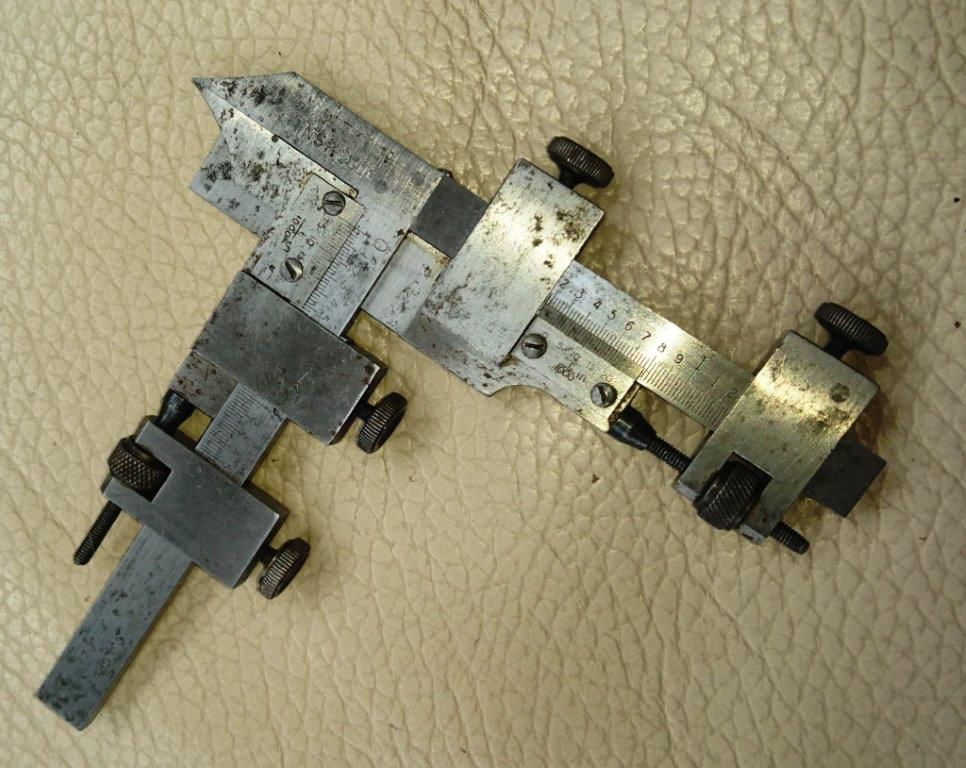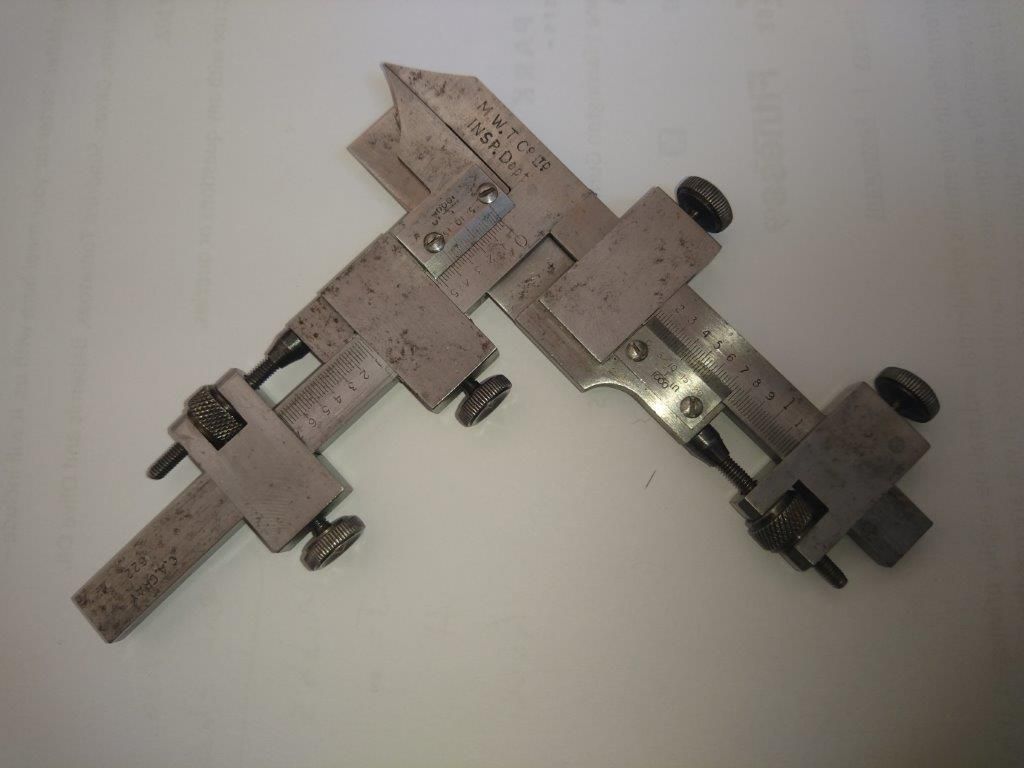Well, than you all for your expertise, and for such exhaustive advice.
I have gone for the conservative conservation approach, gentle abrasive and cleaning with solvent. Here's the results so far:

I think (though I'm not sure) that the graduations are engraved not etched, and I don't think they are filled. Under a hand lens I can see that they are indented into the surface, but not by much and they seem to be a change in texture more than a contrasting colour. In any case I could foresee difficulties as suggested in possibly etching the surface finish – so I have gone at it gently with 1500 grit wet or dry used mostly dry but wet where it needed a bit more attack, and clean with brake cleaner. The W&D paper was a thin strip glued to a lolly stick, this gives a good compromise between being too flat and only touching the high spots or rounding the corners of every surface.
I cleaned the knurled surfaces with one of those horrid mini wire brushes in a Dremel. Saying to myself as I did so "please don't let this catch and throw it across my workshop…"
For the time being I've just oiled the caliper again to reduce the chance of my sticky finger prints rotting the surface, but I'm keen on George's micro-crystalline wax idea. It's a lot more practical than trying to keep things wrapped up in VPI paper.
So I think I'm going to quit while I'm ahead, maybe coat the caliper with something but I've done as much abrading and scrubbing as I want to. They'll never be new, but at least they are readable. I just need to re-calibrate the zero's for the vernier scales – I took both off to clean underneath them and I haven't got then absolutely bang on the right position again yet.
Many thanks for the advice, as ever the expertise available is second to none.
Rgd Simon
Edited By Simon Williams 3 on 08/05/2017 12:02:24
Simon Williams 3.






